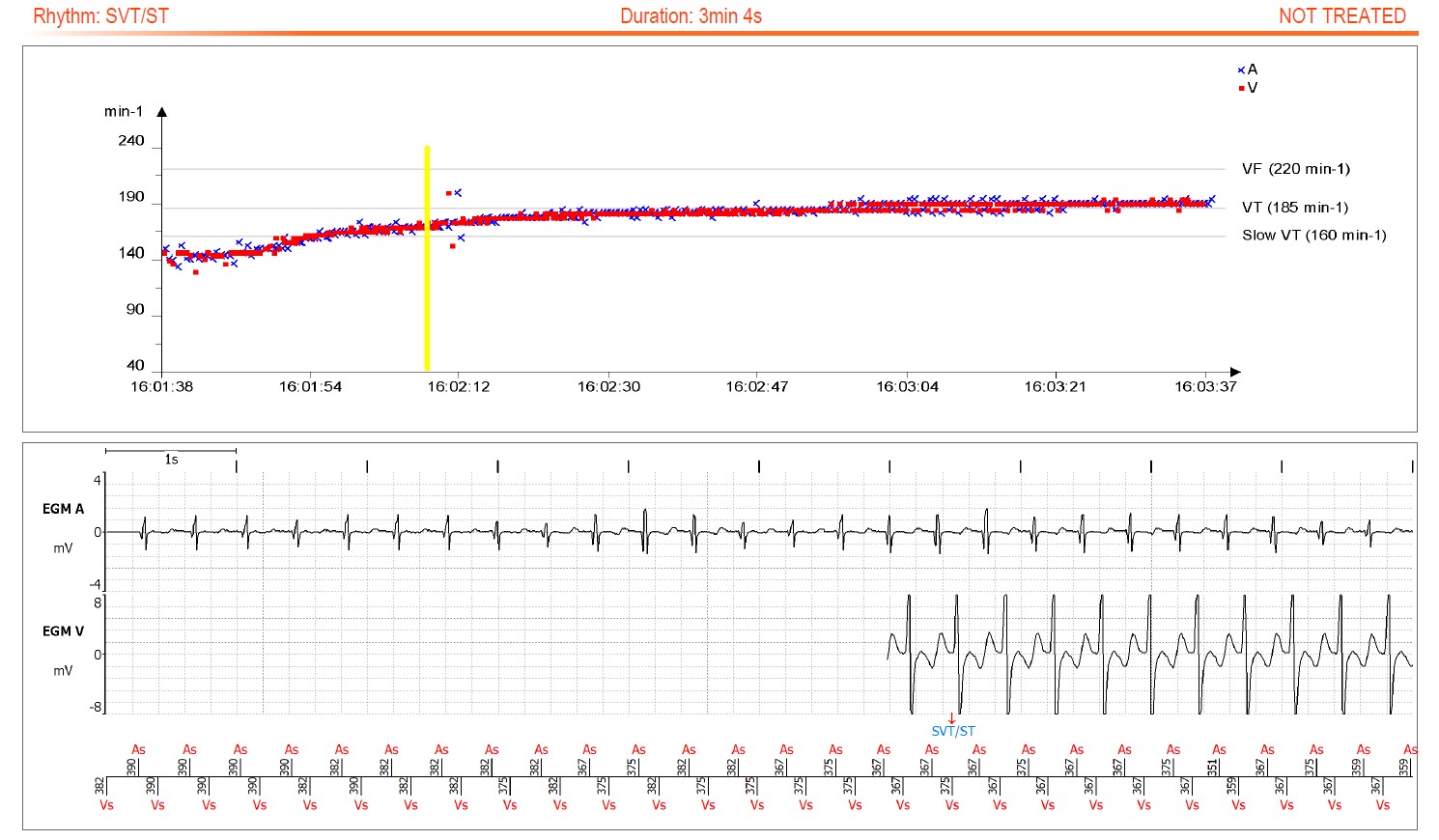Excercise
Case Summary
0 of 1 Questions completed
Questions:
Information
You have already completed the case before. Hence you can not start it again.
Case is loading…
You must sign in or sign up to start the case.
You must first complete the following:
Results
Results
Time has elapsed
Categories
- Not categorized 0%
-
This case shows a loss of CRT as the atrial rate is higher than 145 beats per minute (the programmed maximal tracking rate). The tachogram shows a progressive rise of atrial rate, making the diagnosis of sinus tachycardia possible.
Loss of CRT during exercise is an underestimated problem as:
1. It will only have a minor impact on the %CRT parameter, triggering no alert.
2. The episodes are not saved into the memory of the device. Except when the heart rate enters into the VT zone and is discriminated as SVT such as in this case.
3. While patients may be highly symptomatic as resynchronization is lost when the patient needs it most, the symptoms are commonly attributed to the underlying heart disease, and not to device programming.
The only correct way to detect loss of CRT during exercise is to evaluate the EGM during an exercise test but this is rarely performed as it is time consuming and needs an multi-disciplinary approach. While increasing the maximal tracking rate is an option for many device companies, 145/min is the highest programmable maximal tracking rate in MicroPort CRT defibrillators. This is because higher heart rates during sinus rhythm are considered deleterious for the heart and even arrhythmogenic. In this case the dosage of béta blockers was increased after ensuring that the patient was compliant to his heart failure medication.
In MicroPort CRT-D devices, the Max Rate can be programmed between 100 and 145 beats per minute.
- 1
- Current
- Review / Skip
- Answered
- Correct
- Incorrect
-
Question 1 of 1
1. Question
A 56 year-old patient implanted with a CRT-D (Platinium SonR) due to dilated cardiomyopathy comes for a planned check-up.
The CRT-D is programmed in DDD 60 (lower rate) – 145 (maximal tracking rate). He complains of exertional dyspnea.
During the interrogation he has the following EGM.
The following episode is saved into the memory of the device.
What is the diagnosis?
CorrectIncorrect




